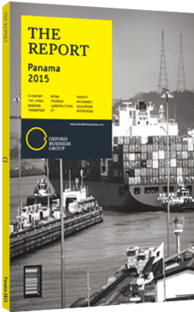Panama expands technical and vocational training
A shortage of skilled workers remains one of the most commonly voiced concerns of business professionals in Panama. The World Economic Forum’s (WEF) “Competitiveness Report 2014-15” lists an inadequately educated workforce as the second-most problematic factor in doing business in the country. With the skills shortage having an impact on the labour market, authorities are looking at ways to align education with labour market demands.
Shortage
Though the trend affects a number of Latin American economies, Panama’s status is especially concerning. A survey by ManpowerGroup entitled “Talent Shortage 2014”, covering some 40,000 companies in 42 countries across the Americas in early 2014, revealed that Panama is the third-most difficult country in the Americas in which to find skilled labour. Brazil and Argentina, in that order, took the top spots. In Panama the shortage affects multiple sectors, but is particularly acute in logistics, construction, tourism and agriculture, according to Panama’s National Competitiveness Centre.
At the top of the shortage pyramid are technicians. Alberto Alesi, regional director for Central America and Dominican Republic at ManpowerGroup, told OBG, “There is still a cultural stigma attached to technical professions. Most students want to follow careers in law, engineering and business, while companies are increasingly looking for technically skilled workers.” Along with technicians, office, accounting and finances staff; sales representatives; manual labour; drivers and engineers, IT and purchasing personnel made up the most difficult positions to fill.
According to the survey, the most important reasons leading to the shortage of skilled labour were the lack of available candidates (34%), of technical skills (hard skills, 25%), of workplace experience (soft skills, 21%), of work experience in general (16%) and of industry-specific education (10%). At below 5% in 2014, unemployment in Panama is relatively low. More than 50% of the pool of unemployed workers is between 18 and 30 years old. A second survey by ManpowerGroup, entitled “Achieving Commitment at Work”, revealed that the most common reason for rejecting an applicant in this demographic was a lack of experience (46%). Alesi said that the absence of emphasis on internships during university is affecting graduates’ employability. “Students only have internships when they are practically finished with their studies,” he told OBG. “The small number of internships that are available often fail to develop the student’s soft skills and prepare him/her for the labour market.” Only 27% of the companies surveyed offered some kind of internship.
Distortions
The shortage has resulted in a series of distortions to the labour market, including upward pressure on salaries and frequent job rotation, which has had a negative effect on productivity. Companies operating in Panama also face barriers when importing talent. There is a cap on the number of foreigners occupying executive-level positions of 10-15% of a company’s structure and importing talent remains a polarising issue in the country.
Technical Training Centres
Addressing the lack of skilled labour has been a concern of the Panamanian government in recent years. It has sought to establish a network of seven new technical training centres at the post-secondary level designed to cater to the country’s labour market needs. According to the Ministry of Education, the centres will each represent an investment of $8m and are slated for Bocas del Toro, Chiriquí, Veraguas, Panamá, Colón and Darién. Soon after taking office in July 2014, the Varela administration established a high commission to develop long-term strategies to meet labour market demands for technical and professional occupations. In February 2015 the government oversaw the tender for the design and construction of the first Bilingual Technical Institute, which is to be located in the Tocumen area. The institute will have a capacity for some 10,000 students.
You have reached the limit of premium articles you can view for free.
Choose from the options below to purchase print or digital editions of our Reports. You can also purchase a website subscription giving you unlimited access to all of our Reports online for 12 months.
If you have already purchased this Report or have a website subscription, please login to continue.

